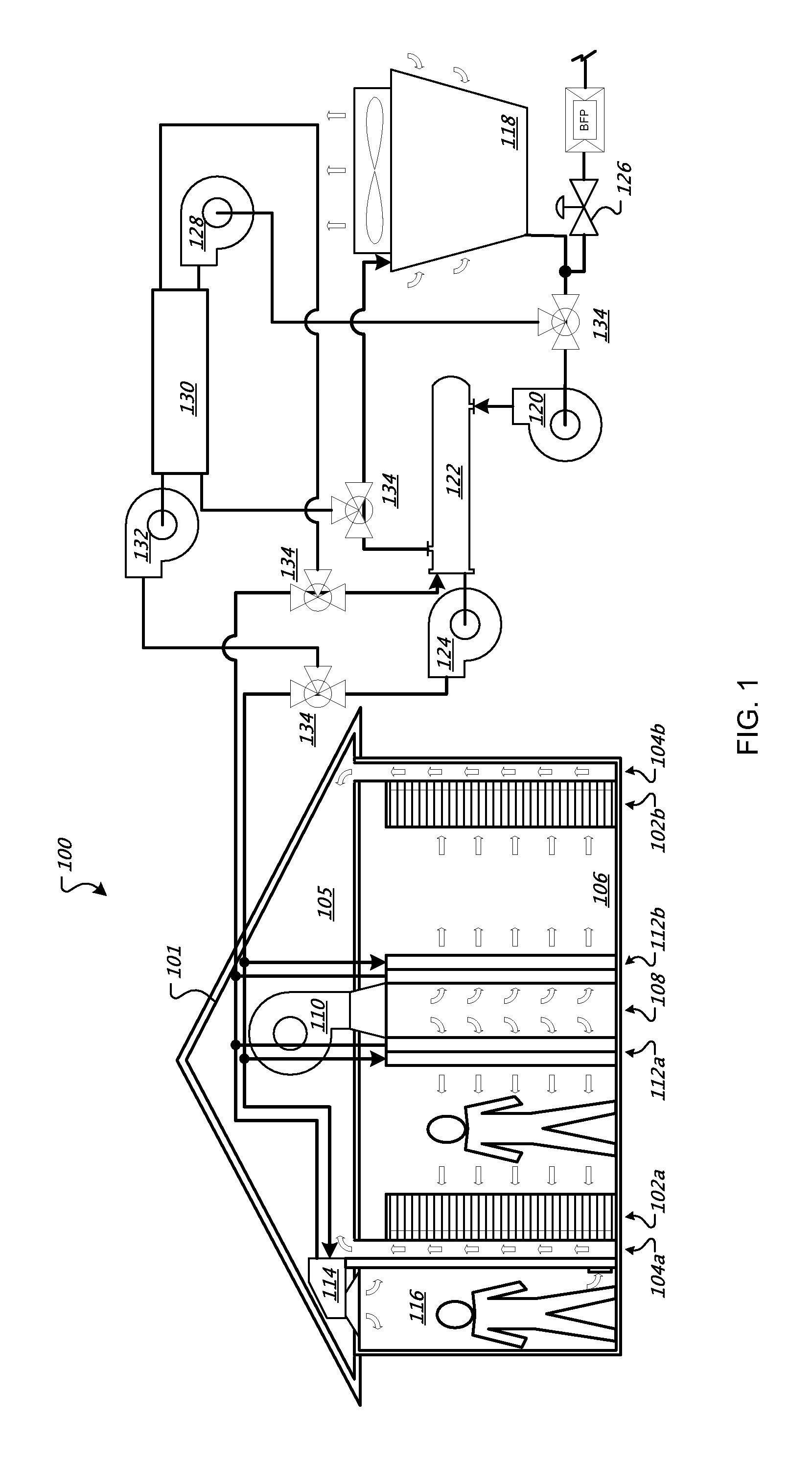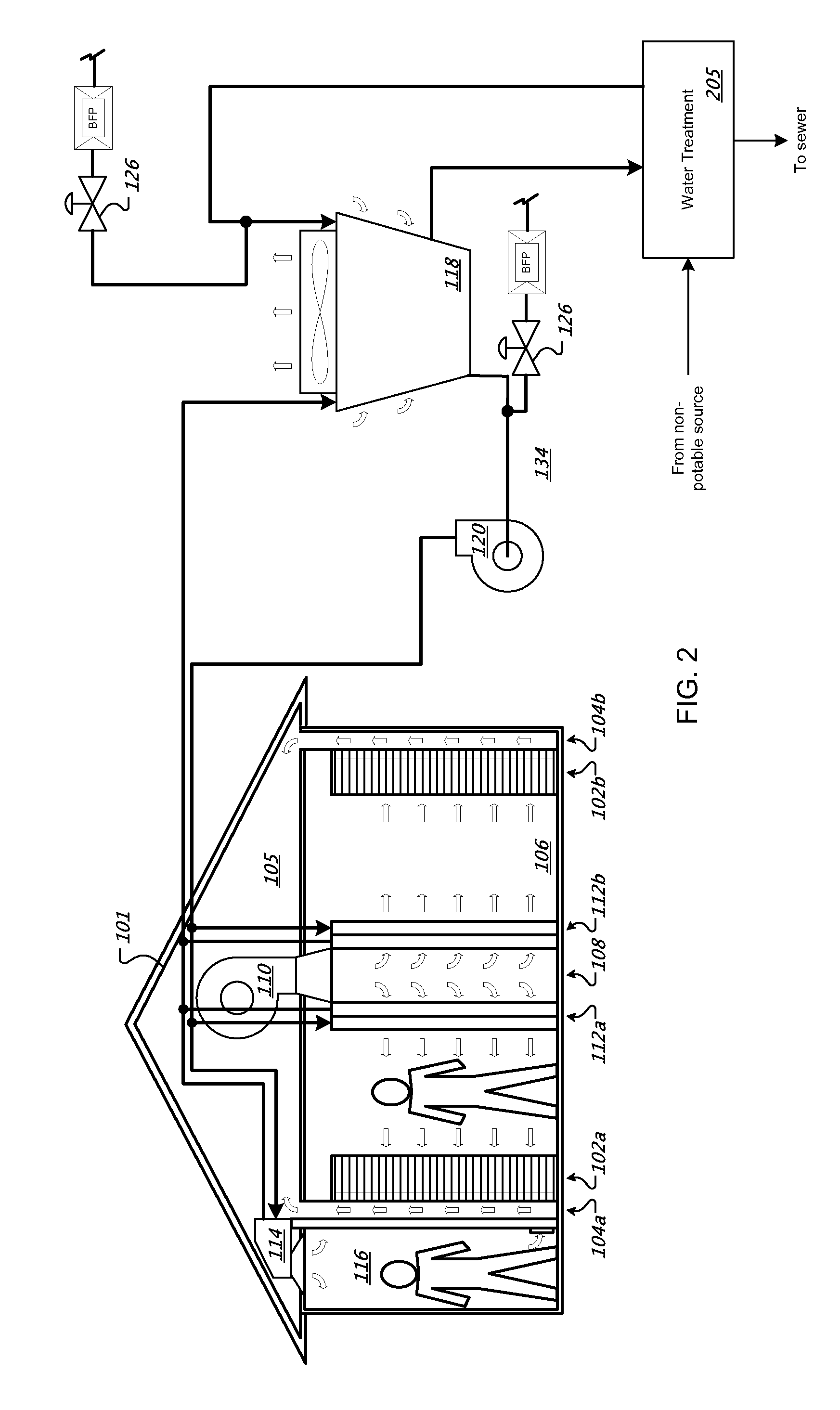Electronic device cooling system
a technology for electronic devices and cooling systems, applied in the direction of electrical apparatus casings/cabinets/drawers, domestic cooling apparatus, heating types, etc., can solve the problems of high electrical power consumption, double hit, power consumption,
- Summary
- Abstract
- Description
- Claims
- Application Information
AI Technical Summary
Benefits of technology
Problems solved by technology
Method used
Image
Examples
Embodiment Construction
[0031]FIG. 1 is a schematic diagram showing a system 100 for cooling a computer data center 101. The system 100 generally includes an air handling unit (including e.g., fan 110 and cooling coils 112a, 112b) in the data center 101 for transferring heat from the data center's air to cooling water, a heat exchanger 122 for removing heat from the cooling water and passing it to cooling tower water, and a cooling tower 118 to pass the accumulated heat to the ambient air through evaporation and cooling of the cooling tower water. In general operation, the system 100 may be run from the cooling tower / heat exchanger / cooling coil system, though a powered refrigeration system such as a chiller may be provided for peak loads, such as when the outdoor ambient dew point is very high and the cooling tower cannot provide sufficient cooling alone. As explained below, control parameters for the system may also be set so as to avoid most or any need for the use of chillers or other such items.
[0032]T...
PUM
 Login to View More
Login to View More Abstract
Description
Claims
Application Information
 Login to View More
Login to View More - R&D
- Intellectual Property
- Life Sciences
- Materials
- Tech Scout
- Unparalleled Data Quality
- Higher Quality Content
- 60% Fewer Hallucinations
Browse by: Latest US Patents, China's latest patents, Technical Efficacy Thesaurus, Application Domain, Technology Topic, Popular Technical Reports.
© 2025 PatSnap. All rights reserved.Legal|Privacy policy|Modern Slavery Act Transparency Statement|Sitemap|About US| Contact US: help@patsnap.com



